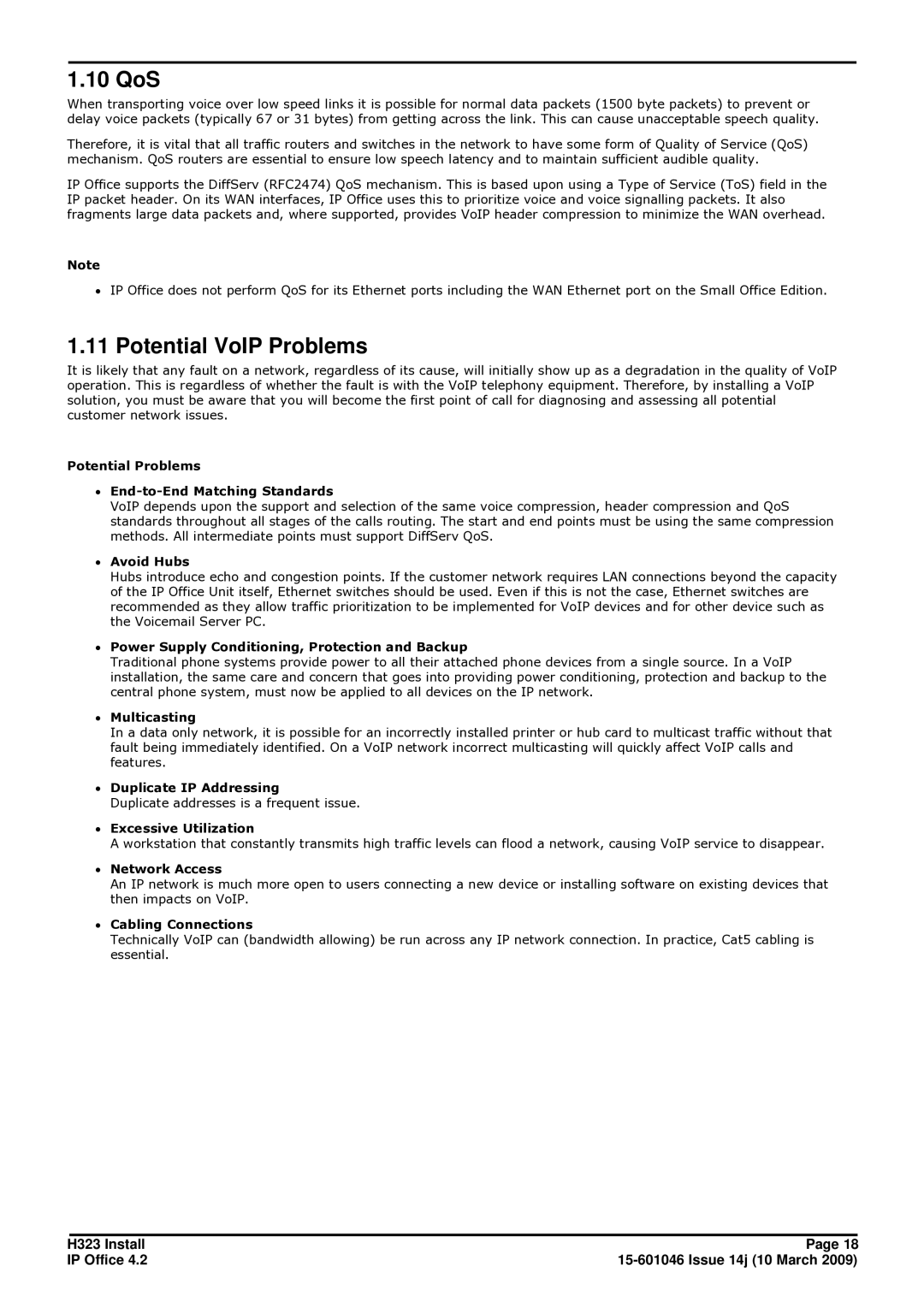
1.10 QoS
When transporting voice over low speed links it is possible for normal data packets (1500 byte packets) to prevent or delay voice packets (typically 67 or 31 bytes) from getting across the link. This can cause unacceptable speech quality.
Therefore, it is vital that all traffic routers and switches in the network to have some form of Quality of Service (QoS) mechanism. QoS routers are essential to ensure low speech latency and to maintain sufficient audible quality.
IP Office supports the DiffServ (RFC2474) QoS mechanism. This is based upon using a Type of Service (ToS) field in the IP packet header. On its WAN interfaces, IP Office uses this to prioritize voice and voice signalling packets. It also fragments large data packets and, where supported, provides VoIP header compression to minimize the WAN overhead.
Note
∙IP Office does not perform QoS for its Ethernet ports including the WAN Ethernet port on the Small Office Edition.
1.11 Potential VoIP Problems
It is likely that any fault on a network, regardless of its cause, will initially show up as a degradation in the quality of VoIP operation. This is regardless of whether the fault is with the VoIP telephony equipment. Therefore, by installing a VoIP solution, you must be aware that you will become the first point of call for diagnosing and assessing all potential customer network issues.
Potential Problems
∙End-to-End Matching Standards
VoIP depends upon the support and selection of the same voice compression, header compression and QoS standards throughout all stages of the calls routing. The start and end points must be using the same compression methods. All intermediate points must support DiffServ QoS.
∙Avoid Hubs
Hubs introduce echo and congestion points. If the customer network requires LAN connections beyond the capacity of the IP Office Unit itself, Ethernet switches should be used. Even if this is not the case, Ethernet switches are recommended as they allow traffic prioritization to be implemented for VoIP devices and for other device such as the Voicemail Server PC.
∙Power Supply Conditioning, Protection and Backup
Traditional phone systems provide power to all their attached phone devices from a single source. In a VoIP installation, the same care and concern that goes into providing power conditioning, protection and backup to the central phone system, must now be applied to all devices on the IP network.
∙Multicasting
In a data only network, it is possible for an incorrectly installed printer or hub card to multicast traffic without that fault being immediately identified. On a VoIP network incorrect multicasting will quickly affect VoIP calls and features.
∙Duplicate IP Addressing
Duplicate addresses is a frequent issue.
∙Excessive Utilization
A workstation that constantly transmits high traffic levels can flood a network, causing VoIP service to disappear.
∙Network Access
An IP network is much more open to users connecting a new device or installing software on existing devices that then impacts on VoIP.
∙Cabling Connections
Technically VoIP can (bandwidth allowing) be run across any IP network connection. In practice, Cat5 cabling is essential.
H323 Install | Page 18 |
IP Office 4.2 |
